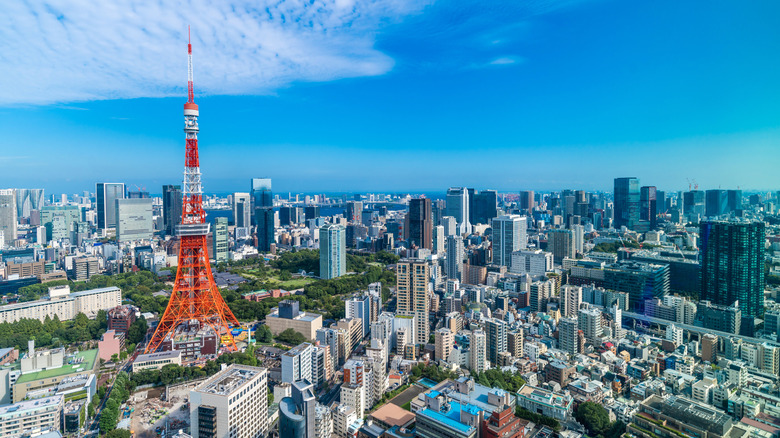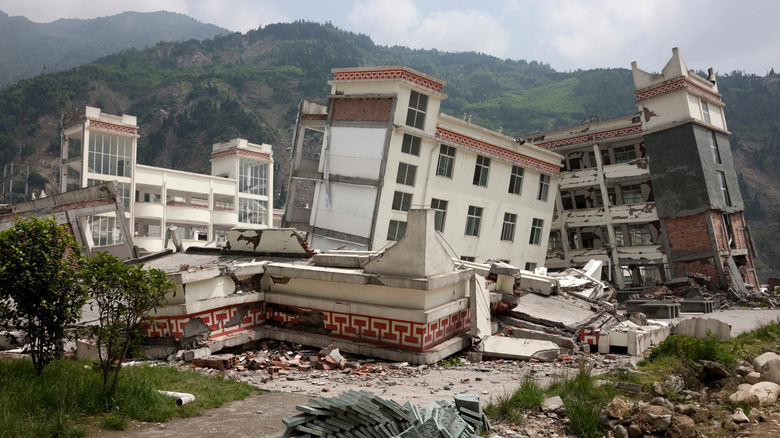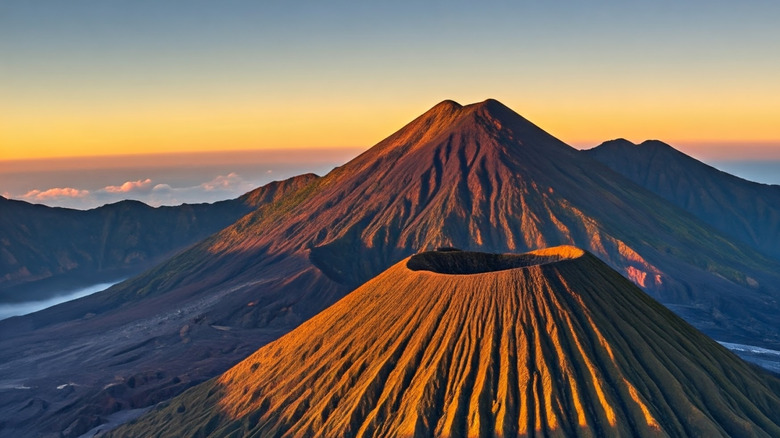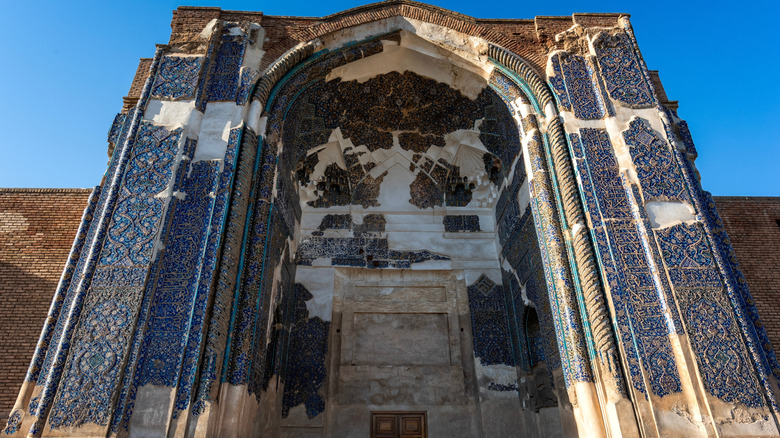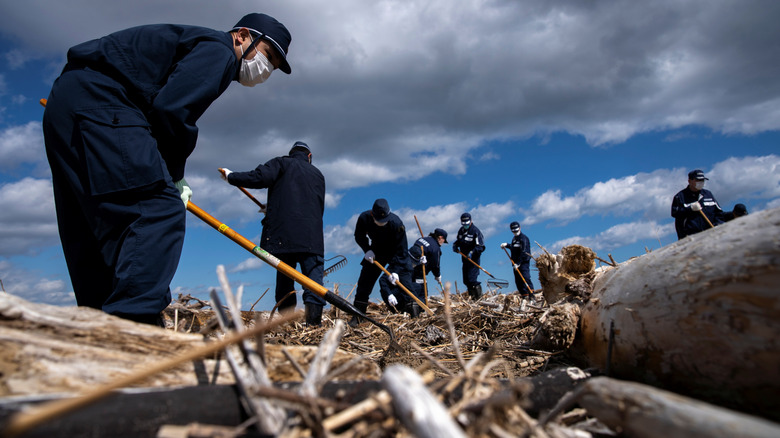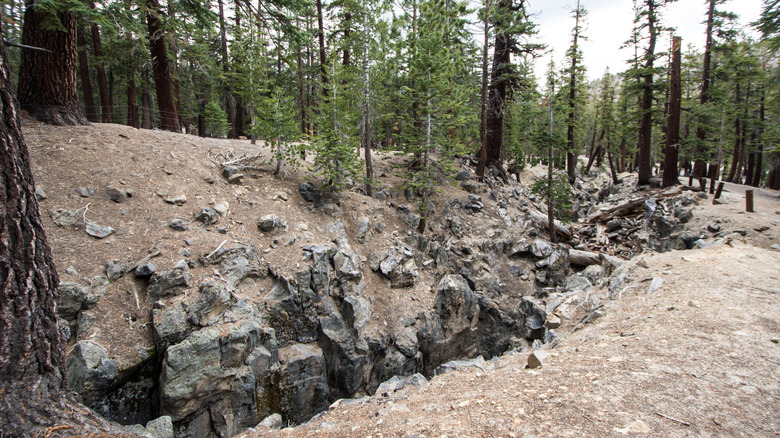The World's Most Earthquake-Prone Countries Where The Ground Is Never Truly Still
Earthquakes — just a mention of the word is enough to send a tingle down the spine and a shake through the body (literally). These planet-wobbling shocks have wrought havoc on humankind since time immemorial. According to the World Health Organization, a whopping 750,000 people have died due to earthquakes since 1998, with millions more affected in other ways.
As a result, it can seem like nowhere is safe. Luckily, thanks to modern seismology, we know that earthquakes hit the great city of San Francisco almost daily, while minor rumblings happen all the time across New York, and some have even troubled the lagoons, museums, and rocket launches of Florida's Space Coast. Nope, not even the Sunshine State is immune!
What we do know is that the vast majority of serious earthquakes occur in key locations around the globe — from the Pacific Ring of Fire to the seismic hotspots that hover around Iran. The upshot? Some countries are simply more prone to getting hit than others. Thankfully, data from the United States' National Oceanic and Atmospheric Administration published via Statista can help reveal those places. By adding up all quakes since 1990 that have either caused major damage, resulted in at least 10 fatalities, or that pass the threshold with a magnitude of over 7.5, we can identify the world's most earthquake-prone locations. Let's take a closer look at those.
China
No country on planet Earth has suffered more serious earthquakes in the last 35 years than China. Indeed, the Red Dragon and the second most populous nation on the globe counted an unenviable 187 quakes in that period. Some have been particularly devastating — such as the 2008 Sichuan earthquake, a 7.9-magnitude earthquake, which rattled the mountains north of Chengdu, flattened whole towns, and killed over 87,500 people.
All that damage is the result of an inconvenient meeting of tectonic plates — huge slabs that jostle and move on the surface of the planet, creating hotspots for earthquakes to occur. China just so happens to sit right atop where a whopping three of those plates collide. Plus, the country is also highly mountainous, which means that deadly landslides are all the more likely once a quake has struck.
Of course, none of that has done anything to stem any of the wanderlust for this incredible corner of Asia. Over 30 million people still head to China each year — and it's easy to see why. Whether you come to get lost in the futuristic cityscape of Shanghai, witness the incredible Terracotta Army of Xi'an, or traverse the Old Silk Road through the desert, the list goes on and on.
Indonesia
Remember that earthquake-rich Ring of Fire? Indonesia strings right along it. Welcome to one of the planet's seismic hotspots! There are a smoke-belching 120 active volcanoes on this island nation, and one thing to note is that volcanoes and earthquakes are peas in the proverbial pod — where there's one, there's the other.
According to the stats, Indonesia has been rattled by over 170 serious quakes since 1990. That number will surely include the infamous 9.1-magnitude Sumatra-Andaman earthquake, better known as the Indian Ocean earthquake. It happened in the early hours of Boxing Day 2004, unleashing the force of a formidable 23,000 nuclear bombs and creating a tsunami that would go on to kill an estimated 230,000 people across the region.
Despite the ever-present risks, Indonesia's seismic past and present also imbue it with a rich beauty and strange allure. Nowadays, people flock to the country to hike up volcanoes in Bali and neighboring Lombok, Bali's uncrowded sister island. Similarly, the volcanic reefs that line the islands here are also what make it a mecca for surfers and wave chasers alike.
Iran
Resplendent mosques, the jagged tops of the Alborz Mountains, the medieval cultural hub of Esfahan — Iran is home to some of the most totemic wonders of the Middle East within its borders. Sadly, the country also comes in at No. 3 on our list of the countries most ravaged by earthquakes over the last few decades.
According to Statista, 112 individual earthquake events have caused serious damage, loss of life, or significant seismic activity here since 1990. Among them, the Manjil-Rudbar earthquake killed something in the region of 50,000 people with its initial hit (6.4 magnitude) and a series of aftershocks with magnitudes of 6.2 and 6.5, respectively. Then, in 2003, the 6.5-magnitude Bam earthquake struck, taking 85% of the local buildings and lots of lives with it.
These days, Iran remains out-of-bounds for most U.S. travelers. At the time of writing, the State Department has issued a Level 4 travel advisory, which essentially means American citizens shouldn't travel there due to potential risks, including civil unrest and arbitrary detention.
Japan
The team over at the U.S. Geological Survey makes it clear that Japan only counts fewer earthquakes than Indonesia because it's a smaller country overall. Were the home of sushi, sashimi, and sumo as big as its Southeast Asian neighbor, you'd likely see it far, far higher up this list. To put it another way: Japan is a really active place on the earthquake front.
When it comes to highly destructive quakes, Japan still counts over 100 in the past 35 years — more than Italy, Greece, and Afghanistan combined. The worst of them include the 2011 Tohoku quake, another tsunami-starter caused by the coming together of the Pacific and North American tectonic plates. It measured an earth-shaking 9 on the Richter Scale and ended up taking the lives of over 20,000 people.
However, there's no tainting the allure of this East Asian gem. As many as 45 million people choose to make Japan their vacation destination each year, and the foodie hub of Osaka is a top destination when it comes to culinary experiences.
United States
Finally, there's the good old United States of America. Trace the Pacific Ring of Fire across the ocean from Asia and you'll soon be dragging your finger in a squiggle, through the fjord-carved lands of Alaska, and down the length of the West Coast from Washington to the Mexico border. It's hardly a wonder that nearly 80 destructive quakes have ravaged the stars and stripes over the years.
Of the lot, the 6.7-magnitude Northridge earthquake of 1994 stands out. It's one of a few in modern U.S. history to have caused death tolls in the double figures, and it did so because it struck a highly populated corner of the San Fernando Valley. In fact, Northridge itself is an area that's home to major draws like the Universal Studios Hollywood, Six Flags Magic Mountain, and the vibrant and historically diverse LA neighborhood of Pacoima. All of which meant that there were bound to be plenty of people about.
The good news is that the most vulnerable parts of the country have developed building codes to help things withstand the shakes. Take California, for example. According to the Seismic Safety Commission, all new buildings in the state must meet a series of minimum standards to ensure they're not likely to collapse or cause loss of life in the event of an earthquake.
